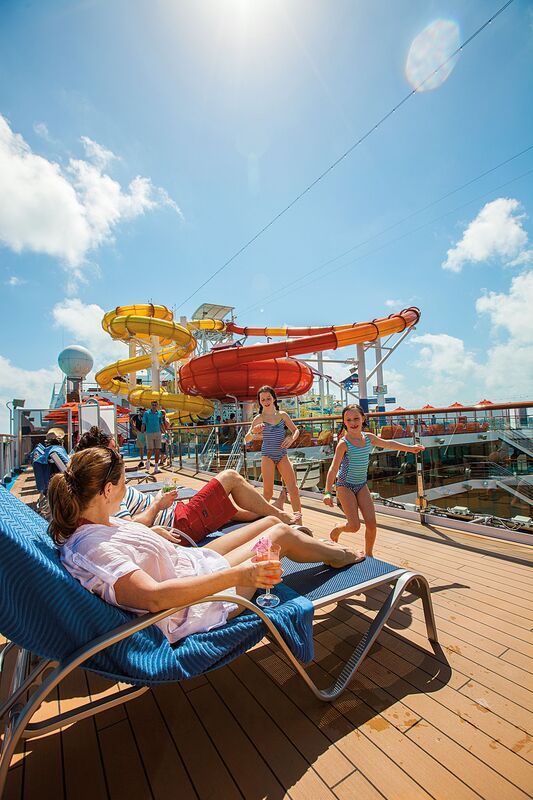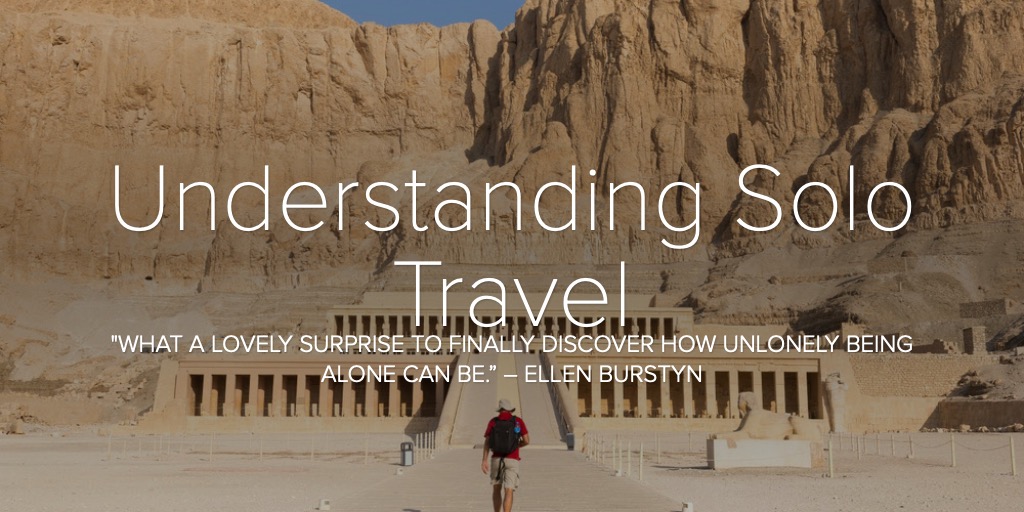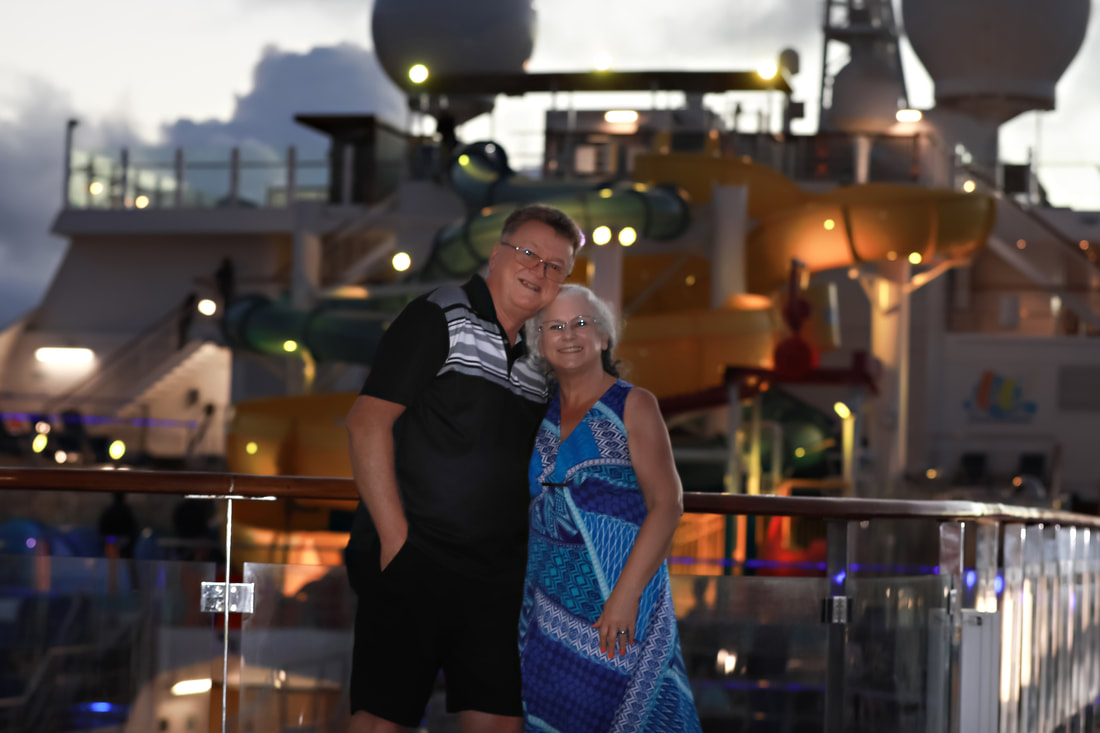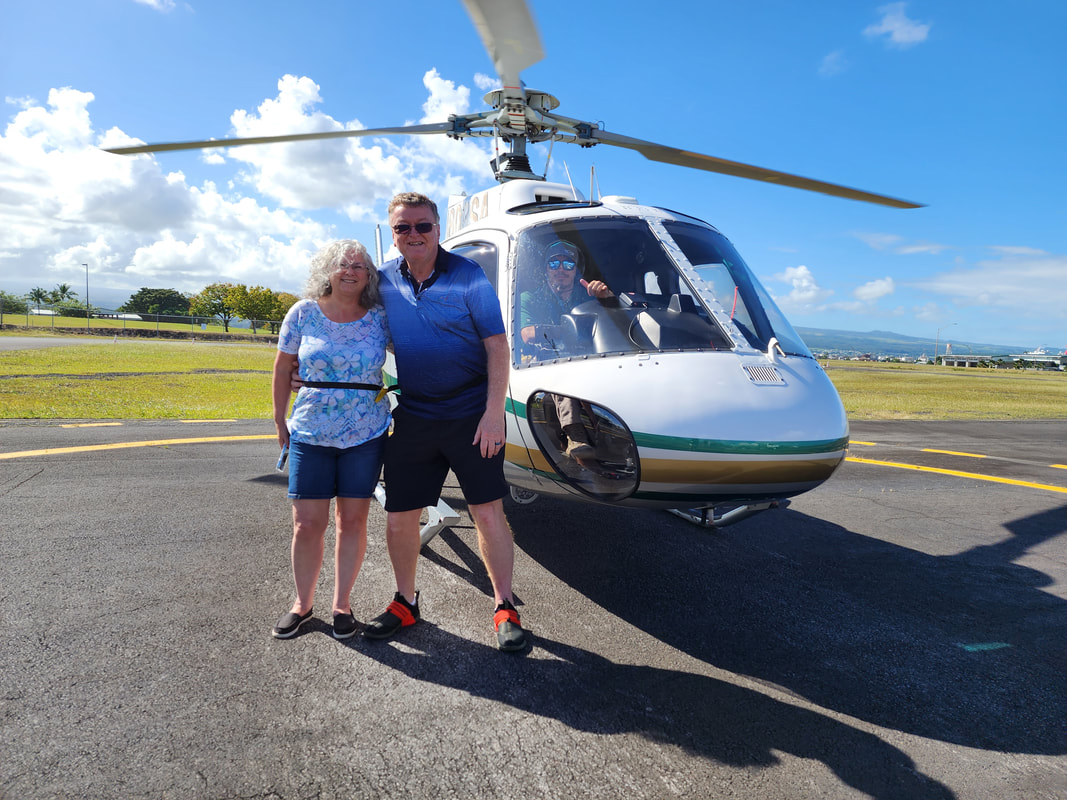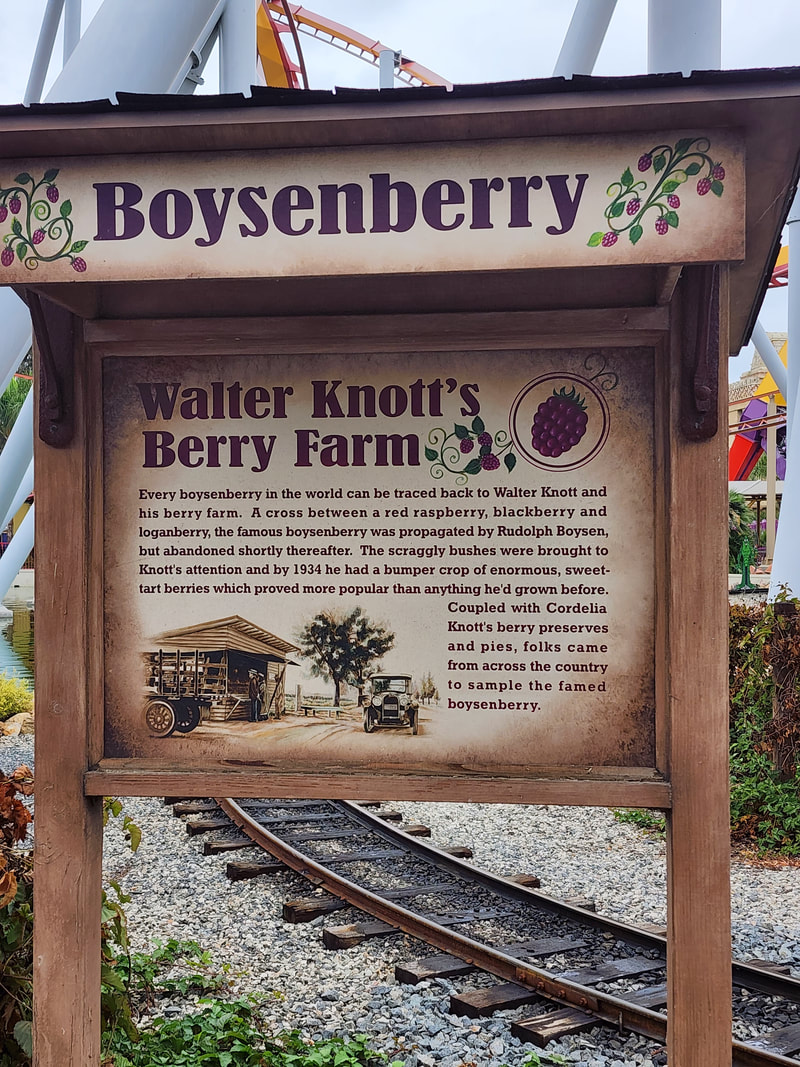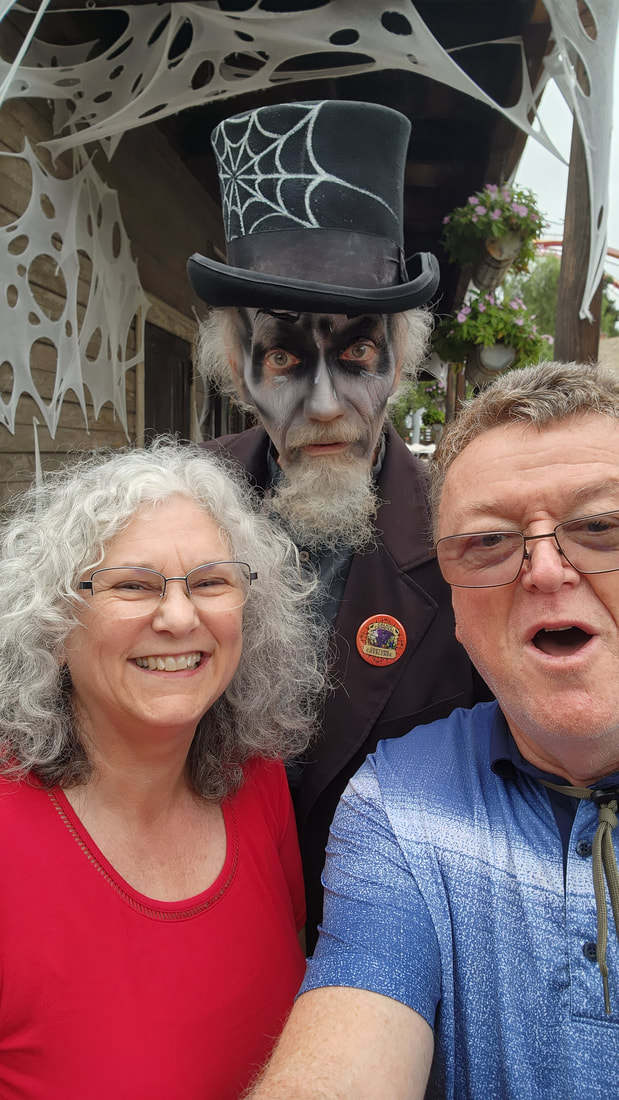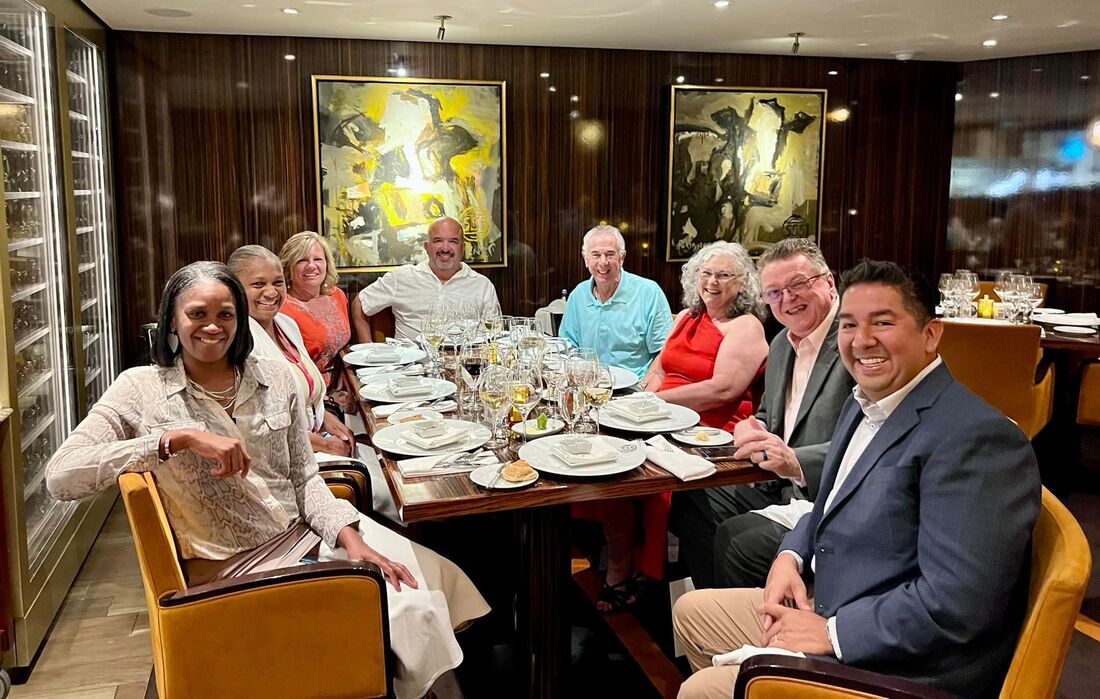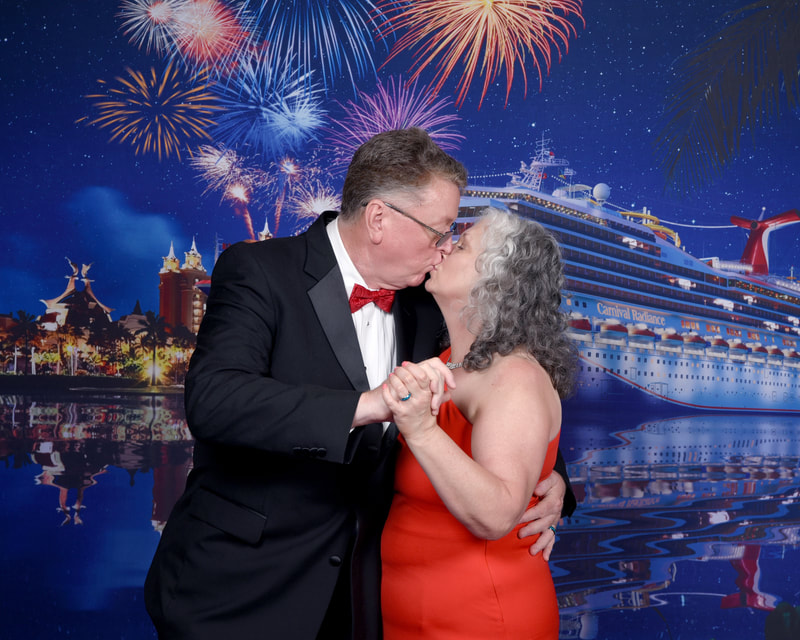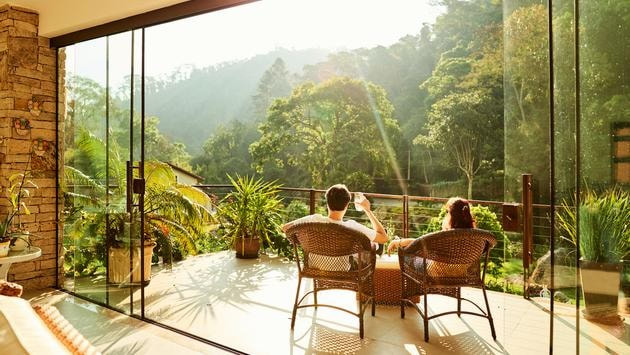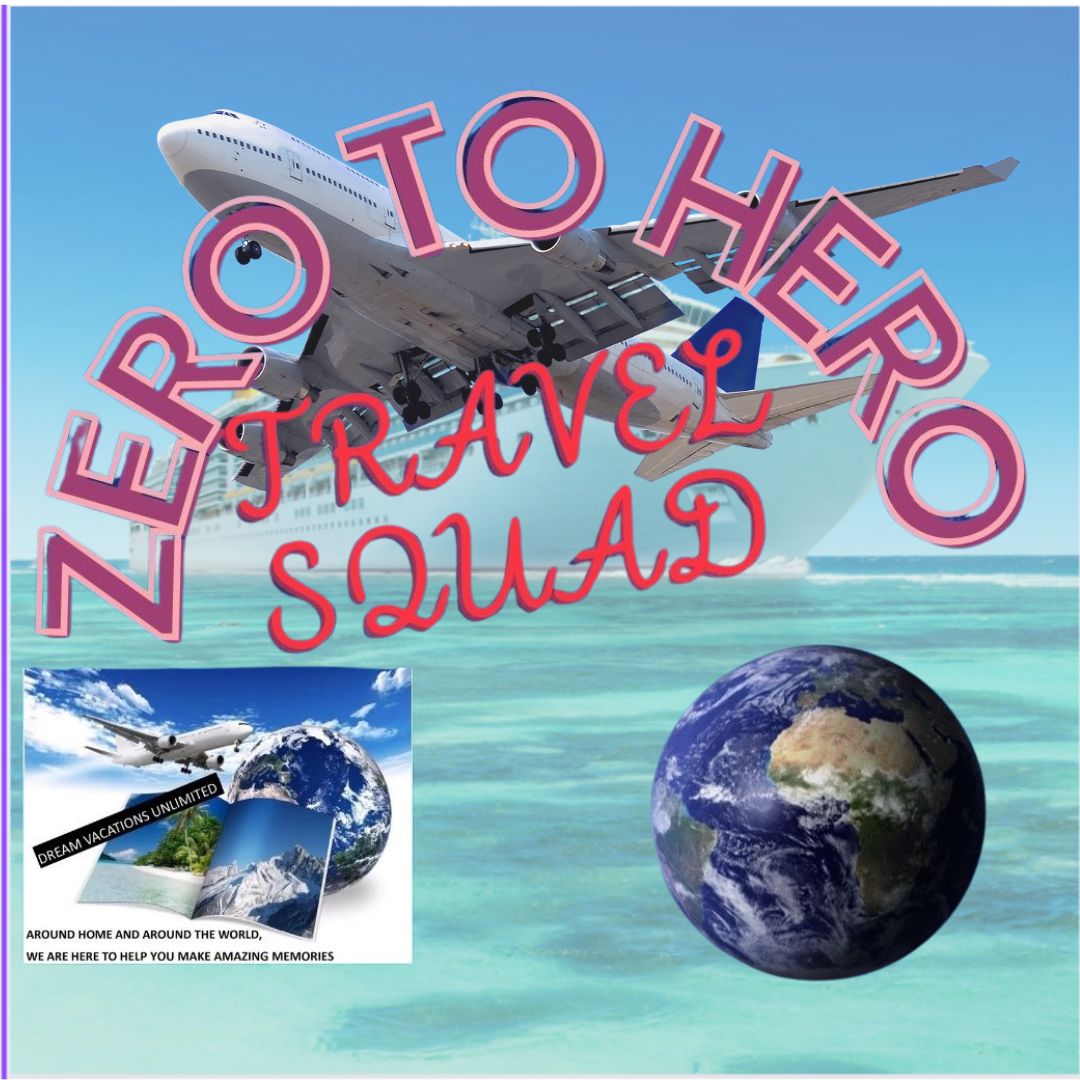Multi-generational family vacations are becoming more and more popular these days because they allow you to spend quality time with your loved ones while creating unforgettable memories. One of the best ways to do this is by taking a family cruise. There are many reasons why a cruise is an ideal option for a multi-generational family vacation, and the Southern Caribbean is a great destination for families. Let's dive into why.
0 Comments
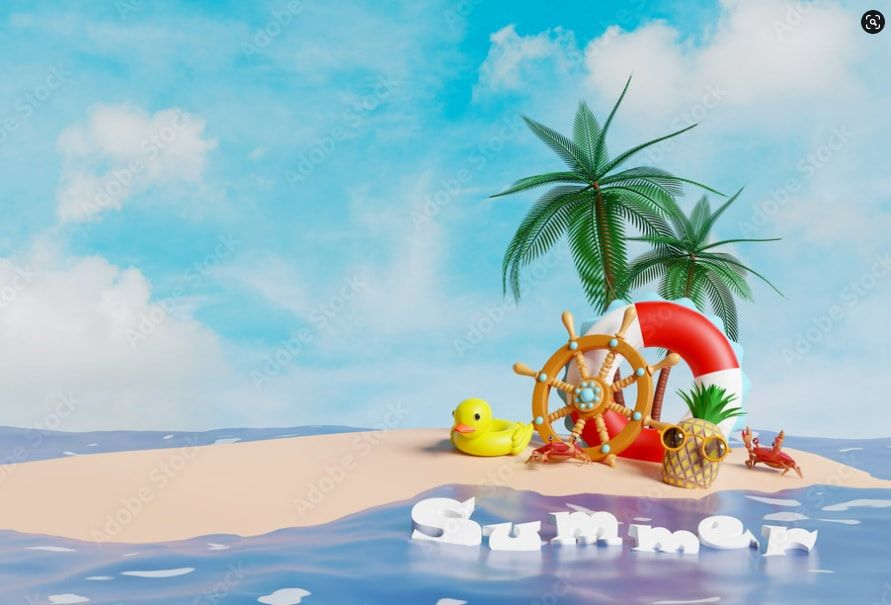 Traveling with family can be a wonderful experience, filled with memories that will last a lifetime. However, deciding on the best type of vacation for your family can be overwhelming. Two popular options for family travel are cruising and all-inclusive resorts. In this blog, we'll explore the benefits of family travel and compare family cruising to all-inclusive resorts. Benefits of Family Travel: Family vacations can provide numerous benefits, including quality time spent together, exposure to new cultures and experiences, and valuable learning opportunities. Family travel also allows children to gain independence, build confidence, and develop life-long memories. When planning a family vacation, it's important to consider the interests of all family members. Some families may prefer an adventure-filled vacation, while others may opt for a more laid-back experience. However, regardless of the destination, family travel has numerous benefits that make it a worthwhile investment. Family Cruising: Cruising has become an increasingly popular vacation option for families. Cruising offers a "floating hotel" experience, with endless entertainment and dining options, typically at an all-inclusive price. Family cruise ships offer amenities specifically designed for families, including children's programming, family-friendly dining options, and on-board activities. There are a few advantages of family cruising, including: 1. Endless Entertainment: Cruise ships have a range of entertainment options, from movies and shows to live music and comedy performances. There are also various on-board activities, such as rock climbing, mini-golf, and even water parks. Kids can have fun and socialize with their peers while parents can relax and enjoy their vacation. 2. All-Inclusive Dining: The dining options on most cruise ships are all-inclusive, which means that guests can eat as much as they like without worrying about additional charges. Family cruise ships also offer various dining options for picky eaters or those with dietary restrictions. 3. Organized Children's Programming: Family cruise ships typically offer organized children's programming, including youth clubs with age-based activities, supervised playrooms, and even children's theaters with shows specifically designed for kids. This allows children to interact with other kids their age and engage in age-appropriate activities while parents enjoy some alone time. Butch and Amanda on-board Carnival Radiance on 2 week cruise to Hawaii. All-Inclusive Resorts: All-inclusive resorts also offer a great option for family travel. Like cruises, all-inclusive resorts provide guests with an all-inclusive experience, where everything from meals to activities are included in the price. (Mom (Sylvia), her niece Joy, Butch and Amanda enjoy family while dining on board) There are a few advantages of all-inclusive resorts, including: 1. Variety of Activities: All-inclusive resorts offer a range of on-site activities, including beach sports, swimming, and water activities. Many resorts also offer off-site excursions, such as guided tours or cultural experiences. This allows families to explore the surrounding area while still having access to the resort's amenities. 2. Ease of Planning: Many all-inclusive resorts offer pre-planned itineraries or packages, which can eliminate the stress of planning a vacation. Everything is pre-arranged, from meals to activities, which allows families to relax and enjoy their vacation. 3. Privacy and Comfort: All-inclusive resorts provide families with the privacy and comfort of their own room or suite, which can be beneficial for those with babies or young children. Parents can enjoy a quiet evening while children sleep comfortably in their own area. Comparison: Family Cruising vs. All-Inclusive Resorts When comparing family cruising to all-inclusive resorts, it's important to consider the specific needs and preferences of your family. There are clear differences between the two options, and understanding these differences can help you choose the best vacation for your family. Here are a few key differences between family cruising and all-inclusive resorts: 1. Accommodations: Cruising provides families with the experience of living in a floating hotel, while all-inclusive resorts offer a more traditional hotel/resort experience. Cruising cabins tend to be smaller but offer the added benefit of waking up in a new place every day. Resorts generally provide more space and privacy, with a range of room categories to choose from. 2. Entertainment: While both options provide endless entertainment options, the variety of entertainment on a cruise ship is typically more extensive. All-inclusive resorts tend to rely on on-site entertainment, though many also offer off-site excursions. When it comes to family programming, both options provide age-appropriate activities and facilities, but the 24-hour-a-day nature of cruising allows for a greater variety of entertainment and events throughout the day and night. 3. Food and Dining: Both options offer all-inclusive dining, where guests can eat as much as they like without worrying about additional charges. Cruising provides numerous dining options, while all-inclusive resorts generally offer a buffet or a la carte dining options. This can be a preference for families who don't want to be tied to a set dining schedule or would like the flexibility to dine whenever and wherever they choose. In conclusion, family travel is a wonderful way to bond and create lifelong memories. Both family cruising and all-inclusive resorts offer numerous advantages for families seeking a relaxing and enjoyable vacation. When deciding which option is best for your family, consider the variety of activities, entertainment options, food and dining, and accommodations provided by each. Ultimately, the best option will depend on the needs and preferences of your family. By booking your family vacation with Dream Vacations Unlimited, you'll have access to the expertise and resources of independent travel advisors who are passionate about connecting families with their dream vacations. Amanda and Butch Phillips can handle every aspect of your vacation, from flights and accommodations to activities and entertainment, so you can relax and enjoy your vacation without worrying about the details. By, booking your family vacation with Dream Vacations Unlimited, you can expect: 1. Personalized Service: Amanda and Butch work with families one-on-one to ensure that their vacation meets their unique needs and interests. They can provide expert guidance, custom itineraries, and reliable support every step of the way. 2. Competitive Pricing and Exclusive Deals: As part of a larger travel franchise, Dream Vacations Unlimited can access exclusive travel deals and promotions. This means that you can often receive better rates than you would booking on your own. 3. Expert Advice and Recommendations: Amanda and Butch have traveled extensively and can provide expert advice on the best destinations, activities, and accommodations for families. They can make recommendations based on your specific interests, budget, and travel style. 4. Peace of Mind: With Dream Vacations Unlimited, you can rest assured knowing that every detail of your vacation is taken care of. They can handle everything from flights and accommodations to travel insurance and excursions, allowing you to relax and enjoy your family vacation. In summary, booking with Dream Vacations Unlimited will provide you with personalized and professional service, competitive pricing, expert advice, and peace of mind. Contact Amanda and Butch to start planning your family's unforgettable vacation! Go to: butchthetravelguy.com or for a customized vacation quote click on this link: https://tinyurl.com/mry2czvt AS EXPERTS SPECIALIZING IN FAMILY TRAVEL, WE UNDERSTAND THE IMPORTANCE OF HIGHLIGHTING THE UNIQUE OFFERINGS OF DREAM VACATIONS UNLIMITED, OWNED BY AMANDA AND BUTCH PHILLIPS.HERE ARE THE TOP 10 REASONS WHY SOMEONE SHOULD BOOK THEIR VACATIONS WITH DREAM VACATIONS UNLIMITED, SPECIFICALLY CATERING TO THEIR NICHE IN THE CARIBBEAN, MEXICO, LUXURY, AND CRUISING: 1. Expert Knowledge:DREAM VACATIONS UNLIMITED HAS EXTENSIVE KNOWLEDGE OF THE TRAVEL INDUSTRY, WITH A SPECIALIZATION IN THE CARIBBEAN, MEXICO, LUXURY, AND CRUISING, WHICH MAKES THEM EXPERTS IN THEIR FIELD. 2. Personalized Services:THEY OFFER CUSTOMIZED AND PERSONALIZED SERVICES TO CLIENTS, MAKING SURE THEIR UNIQUE NEEDS ARE MET WHILE PLANNING THEIR VACATION. From Helicopter rides to submarines, African Safaris to climbing on a Glacier in Antartica, we have you covered. 3. Unique Experiences:BY BOOKING WITH DREAM VACATIONS UNLIMITED, CLIENTS WILL EXPERIENCE AUTHENTIC AND UNIQUE EXPERIENCES THAT THEY WOULDN'T TYPICALLY FIND ON THEIR OWN. A trip to Knotts Berry Farm just might be the experience that is remembered for life. You just never know who will show up while at Knotts Scary Farm (Berry) 4. Insider Tips:THEY OFFER INSIDER TIPS THAT ONLY EXPERTS LIKE THEM CAN PROVIDE, GIVING CLIENTS A LEG-UP ON THE COMPETITION WHEN IT COMES TO BOOKING FLIGHTS, ACCOMMODATION, AND ACTIVITIES. Check out our many tips and hacks to save you money and time when planning your trips. 5. Cost Savings:DREAM VACATIONS UNLIMITED HAS BUILT LONG-STANDING RELATIONSHIPS WITH VENDORS, ALLOWING FOR COST SAVINGS AND EXCLUSIVE DEALS FOR CLIENTS. HERE WE ARE AT DINNER WITH BUSINESS DEVELOPMENT MANAGER JAVIER YATACO FROM ROYAL CARIBBEAN CRUISE LINES AS HIS GUEST WITH SOME OTHER FRIENDS. 6. Stress-Free Planning:THEY PROVIDE SUPPORT THROUGHOUT THE ENTIRE PLANNING PROCESS, ELIMINATING THE STRESS THAT COMES WITH PLANNING A VACATION. 7. Tailored Itineraries:THEY OFFER TAILORED ITINERARIES TO FIT EACH CLIENT'S NEEDS, ENSURING THAT THEY EXPERIENCE THE TRIP OF THEIR DREAMS. 8. Luxury Accommodations:THEIR EXPERTISE IN LUXURY TRAVEL ALLOWS THEM TO BOOK HIGH-END ACCOMMODATION FOR THEIR CLIENTS, ENSURING THEY RECEIVE THE BEST EXPERIENCE POSSIBLE. 9. Cruising Expertise:WITH THEIR NICHE IN CRUISING, DREAM VACATIONS UNLIMITED CAN OFFER INSIDER KNOWLEDGE ON THE BEST CRUISES TO TAKE AND HOW TO MAKE THE MOST OF THE EXPERIENCE. 10. Follow-Up Services:THEIR COMMITMENT TO THEIR CLIENTS DOESN'T END WHEN THE TRIP IS OVER. THEY PROVIDE FOLLOW-UP SERVICES TO ENSURE THAT CLIENTS WERE SATISFIED WITH THEIR EXPERIENCE AND TO BUILD A LASTING RELATIONSHIP. These are just a few reasons why someone should choose to book their vacation with Dream Vacations Unlimited, owned by Amanda Phillips and Butch Phillips. Their specialization in the Caribbean, Mexico, luxury, and cruising gives them an edge in the highly competitive travel industry, and highlighting these unique features will help attract more clients to their business.Multi-generational travel has become increasingly popular over the years as more and more families choose to travel together. The reasons why multi-generational travel is meaningful are many:
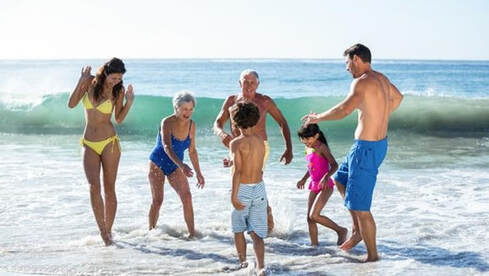 Veteran travel advisors provide tips and strategies on how to tap into this thriving market. TRAVEL AGENT CLAUDETTE COVEY Multi-generational family group playing in the surf. (Photo via iStock / Getty Images Plus / Wavebreakmedia) The multigenerational family market is – without a doubt – thriving, and in large part thanks to the pandemic. “Multigenerational family travel was popular before the pandemic, and now it is booming,” said JoAnne Weeks, vacation division manager at Acendas Travel. “Families who are stretched all over the country haven’t seen one another much in the last two years, and this is evident with the flooding of new travel requests.” “I am seeing demand starting to increase as families want and need to get away after the last two years,” said Chris Caulfield, owner of a CruiseOne franchise. “As protocols are eliminated, it will make travel easier, and the demand for multigenerational family groups will skyrocket.” “The crazy thing we are experiencing is an availability issue,” said VIP Vacations President Jennifer Doncsecz. “Many resorts and hotels are full or approaching being sold out. If there is availability, we are finding that rates are higher than most expect.” Here are some tips to help you boost your multigenerational family group business. Targeting Decision Makers “Always make sure you are working with the person in charge,” Weeks said. “You may think you are, but be sure, and don’t be afraid to ask. This will be a time saver and will hopefully help avoid a lot of confusion.” In some cases, it’s one of the adult children who begins the research process, “but you need to find out who is the driving force, and who is paying for everything,” Weeks said. “It’s usually Grandma or Grandpa. They are the ones you need to be qualifying,” she added. “Then find out how much they are funding, and what else is left ‘a la carte’ for the kids to pay for.” Collecting Fees “While these groups are quite lucrative, they are also a lot of work,” Weeks said. “I usually require a flat custom service fee based on how many travelers, and how in-depth their itinerary is. Collect it towards the end of your initial consultation once you have established your knowledge and expertise, and definitely before any information is given out freely.” Doncsecz begins the qualifying process by ascertaining how many rooms the group believes it needs and what price point they are aiming for. “Many tour operators offer promotions for rooms that are linked together so we share the type of perks certain hotels/resorts will provide if they have ‘x’ amount of rooms booked and explain how this is a great way to link people together and earn fun perks,” she said. “I ask my clients what types of experiences they want on their cruise,” Caulfield said. “Destination is also key in selecting options.” He recommended that advisors keep up to date on promotions like Kids Sail Free, which are advantageous to multigenerational groups. “In addition, whether cruise or land, make sure you are familiar with the options that cater to families.” Setting Expectations “I am on a mission to get rid of the perception that ‘deals’ are out there. Deals were out there in January of 2021, but consumers should not be on the hunt for them,” Doncsecz said. “As travel advisors, we should be setting the expectation of pricing upfront before a quote is even prepared. “Demand plus supply chain issues plus higher gas prices equals higher costs to travel! “After setting the tone for costs and going over their budget requests, I ask if everyone traveling has a passport, reminding adults that childrens’ passports are only valid for five years. “I ask about the makeup of each family and the room configurations – families of five many times need to split into two rooms, which can be pricey,” she said. “I also ask for the contact information for each of the families that have expressed interest so that the lead person doesn’t have to be the go-between. “Finally, I include travel insurance with each quote so they can travel with peace of mind!” Knowing Your Stuff “Familiarize yourself with the more mainstream family-friendly destinations, resorts and or cruise lines,” Weeks said. “You need to know more than the consumer does going into it.” She added, “Think outside the box. Don’t forget there are river cruise lines out there promoting to families now. There are villas in Costa Rica, African safaris and luxury small-group family tours offered all over the globe.” What's Booking Multigenerational family groups are setting their sights on cruise vacations, all-inclusive resorts and such destinations as Mexico, the Dominican Republic and Hawaii. “Families want a trip where there is something for everyone to do individually and as a group,” said Chris Caulfield of CruiseOne. “Ships today have so many activities and features that are ideal for multigenerational vacations.” JoAnne Weeks of Acendas Travel is also finding that multigenerational groups are interested in cruise vacations, with Alaska sailings and cruise tours gaining in popularity. “There are families that still want to stay closer to home but are finding out once they figure in hotel cost, resort fees, rental cars, gas pricing, parking fees, food and activities, it’s a better value to head to Mexico,” she said, adding that all-inclusive resorts and Hawaii are also proving popular. “Disney is a big seller and Florida in general is hot,” said VIP Vacations’ Doncsecz. “Cancun and Punta Cana are also destinations that we are booking for families.” New data forecasts that the luxury tourism market will reach a record value of $82 billion by 2030.
According to a report from Global Market Insights Inc., the strong demand for exotic safari experiences will be a key force in the luxury travel industry, particularly in the Middle East and Africa. Travel’s adventure and sport segment is expected to surpass around $12 billion by 2030, due to the emphasis on developing effective strategies to support sports tourism growth. The 2022 Global Travel Trends Report of American Express Travel study found that 58 percent of respondents opt for solo travel to visit their dream destination, which should strengthen the demand for luxury travel. Travelers over 60 will depict a Compound Annual Growth Rate (CAGR) of approximately 15 percent through 2030. The growing desire to spend leisure time traveling and the availability of enough resources boost this generation’s acceptance of luxury travel. Travel and the availability of enough resources boost this generation’s acceptance of luxury travel. While the luxury market in the Asia Pacific accounted for a share of over 28 percent in 2021, the Latin American luxury tourism industry is likely to be one of the fastest growing, reaching nearly $200 million by 2030. The study was conducted with major luxury travel market participants, including Audley Travel, Travelopia, Backroads, G Adventures, Jet2 Holidays, TUI Group, Thomas Cook (India) Ltd., Silversea Cruises, and Abercrombie & Kent USA, LLC. Earlier this year, a survey from Globaldata.com found found that luxury tourism has recovered quicker than budget tourism in the United States due in part to an increase in “high-net-worth individuals.” has recovered quicker than budget tourism in the United States due in part to an increase in “high-net-worth individuals.” 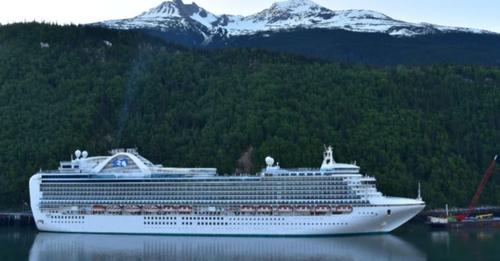 by Daniel McCarthy / July 26, 2022 Princess Cruises on Tuesday announced that it was making a number of adjustments to some scheduled Alaska itineraries because of the recent decision to close a berth at Skagway, Alaska by the White Pass Rail Road. The berth, which is the busiest cruise ship dock in Skagway, is reportedly at risk of a disastrous rockslide. A report by a geotechnical and environmental consulting firm, which took the research at the request of the municipality of Skagway, confirmed that risk. The report, concludes that there is a “significant risk associated with complete failure” for the North Slide of the railroad dock in Skagway, which could produce catastrophic results for ships docked at the berth in Skagway. In light of the risk, White Pass Rail Road, the owner of one of the docks, made the decision to close the forward berth at the Railroad Dock, the main location where Princes Cruises’ Royal Class ships dock. In response, Princess is making a number of changes. “The health and safety of our guests and crew are always our top priority and we appreciate and support this decision,” Princess said in a statement on Tuesday. Here are the changes from Princess:
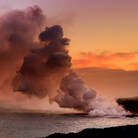 More than 16,000 acres of pristine white sand beach and ocean bay area are now protected thanks to a deal made with Hawaii Volcanoes National Park on the Big Island. This area is home to endangered and endemic species as well as rare, culturally significant Native Hawaiian artifacts. Trust for Public land, a national non-profit land preservation group, purchased Pōhue Bay for more than $9.4 million funded by the Land and Water Conservation Fund and an important donation by the Wyss Foundation. It then transferred its ownership and surrounding land — from Māmalahoa Highway to the shoreline — to the National Park Service so it will be preserved. “Aloha ʻāina begins with our commitment to preserving our islands’ precious natural and cultural systems,” said Lea Hong, associate vice president and Hawaiian Islands state director for Trust for Public Land. “We are grateful the National Park Service will steward the area with the community, ensuring the history, culture, and natural beauty of this place are protected for future generations.” More than 16,000 acres of pristine white sand beach and ocean bay area are now protected thanks to a deal made with Hawaii Volcanoes National Park on the Big Island. This area is home to endangered and endemic species as well as rare, culturally significant Native Hawaiian artifacts. Trust for Public land, a national non-profit land preservation group, purchased Pōhue Bay for more than $9.4 million funded by the Land and Water Conservation Fund and an important donation by the Wyss Foundation. It then transferred its ownership and surrounding land — from Māmalahoa Highway to the shoreline — to the National Park Service so it will be preserved. “Aloha ʻāina begins with our commitment to preserving our islands’ precious natural and cultural systems,” said Lea Hong, associate vice president and Hawaiian Islands state director for Trust for Public Land. “We are grateful the National Park Service will steward the area with the community, ensuring the history, culture, and natural beauty of this place are protected for future generations.” Pohue Bay Project plan PHOTO CREDIT: TRUST FOR PUBLIC LAND Pōhue BayPōhue Bay is a rare, idyllic oasis in a rugged landscape. It’s the only white sand beach for many tens of miles in the rugged district of Kaʻū on Hawaii Island. Generations of local residents visit to surf, fish, dive, and reconnect with nature and culture. It’s home to endangered hawksbill sea turtles, green sea turtles, endangered Hawaiian monk seals, and other species found only in Hawaii. The area houses anchialine ponds — landlocked pools with a mix of fresh and salt water — where rare Hawaiian red shrimp called ʻōpaeʻula live. The area is also culturally significant because it holds remains of ancient Hawaiian villages, petroglyphs dating from ancient times to the 19th century, a burial site, and the largest known abrader tool quarry in the state, according to the Trust for Public Land. Abraders are ancient tools used for sanding, smoothing, and grinding. A well-preserved portion of the Ala Kahakai National Historic Trail, or Ala Loa, an ancient coastal trail system, hugs the coastline. All of these historic and invaluable cultural resources are now protected for future generations. “Pōhue is an incredibly precious and culturally significant landscape that needs to be protected,” said Hawaii Volcanoes National Park Superintendent Rhonda Loh. We are actively seeking community feedback to get a better understanding of the natural and cultural resources in the area. The park is working to develop an interim operating plan for Pōhue that explores opportunities for public use compatible with resource protection. We thank the community for your patience and for the manaʻo shared so far.” About Trust For Public LandSince 1979, Trust for Public Land has conserved more than 59,000 acres in Hawaii. The immediate priority is conserving lands that enhance trails and parks, protect food, forests, and water, and create opportunities for Hawaiian land stewardship. It works with local residents in safeguarding resources that are special and significant to their communities. Hawaii Volcanoes National Park Hawaii Volcanoes National Park protects some of the most unique geological, biological, and cherished cultural landscapes in the world. Mauna Loa and Kilauea are two of the world’s largest and most active volcanoes. Both are located at Hawaii Volcanoes National Park. Most of the coastline where the bay is located is made of ancient lava flows, black rock, and sea cliffs that dart out into the ocean. Credit: ALLISON GODLOVe – Travel News Allison loves learning about new people and places and always jumps at the chance to take a trip. Whether it's visiting a town in her area or traveling across the country, she's up to explore! Pohue Bay Project plan PHOTO CREDIT: TRUST FOR PUBLIC LAND Pōhue BayPōhue Bay is a rare, idyllic oasis in a rugged landscape. It’s the only white sand beach for many tens of miles in the rugged district of Kaʻū on Hawaii Island. Generations of local residents visit to surf, fish, dive, and reconnect with nature and culture. It’s home to endangered hawksbill sea turtles, green sea turtles, endangered Hawaiian monk seals, and other species found only in Hawaii. The area houses anchialine ponds — landlocked pools with a mix of fresh and salt water — where rare Hawaiian red shrimp called ʻōpaeʻula live. The area is also culturally significant because it holds remains of ancient Hawaiian villages, petroglyphs dating from ancient times to the 19th century, a burial site, and the largest known abrader tool quarry in the state, according to the Trust for Public Land. Abraders are ancient tools used for sanding, smoothing, and grinding. A well-preserved portion of the Ala Kahakai National Historic Trail, or Ala Loa, an ancient coastal trail system, hugs the coastline. All of these historic and invaluable cultural resources are now protected for future generations. “Pōhue is an incredibly precious and culturally significant landscape that needs to be protected,” said Hawaii Volcanoes National Park Superintendent Rhonda Loh. We are actively seeking community feedback to get a better understanding of the natural and cultural resources in the area. The park is working to develop an interim operating plan for Pōhue that explores opportunities for public use compatible with resource protection. We thank the community for your patience and for the manaʻo shared so far.” About Trust For Public LandSince 1979, Trust for Public Land has conserved more than 59,000 acres in Hawaii. The immediate priority is conserving lands that enhance trails and parks, protect food, forests, and water, and create opportunities for Hawaiian land stewardship. It works with local residents in safeguarding resources that are special and significant to their communities. Hawaii Volcanoes National Park Hawaii Volcanoes National Park protects some of the most unique geological, biological, and cherished cultural landscapes in the world. Mauna Loa and Kilauea are two of the world’s largest and most active volcanoes. Both are located at Hawaii Volcanoes National Park. Most of the coastline where the bay is located is made of ancient lava flows, black rock, and sea cliffs that dart out into the ocean. Credit: ALLISON GODLOVe – Travel News Allison loves learning about new people and places and always jumps at the chance to take a trip. Whether it's visiting a town in her area or traveling across the country, she's up to explore! |
Butch and Amanda PhillipsAround Home and Around the World, We are here to help you make AMAZING MEMORIES! Archives
April 2023
Categories |
|
 RSS Feed
RSS Feed
